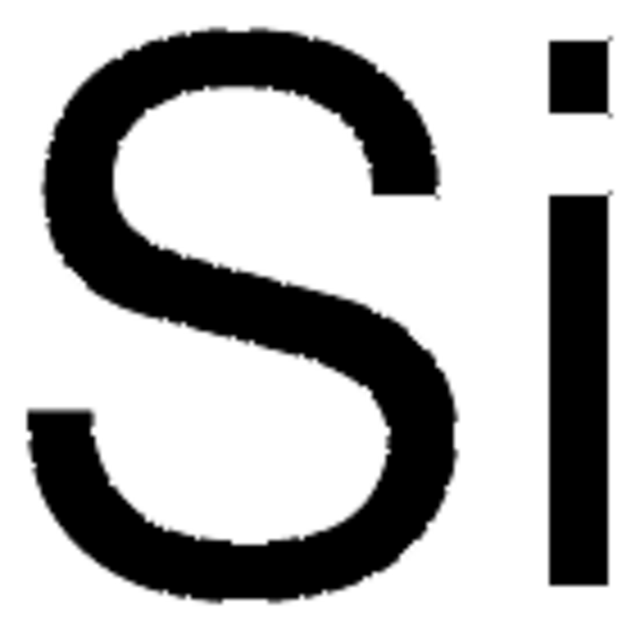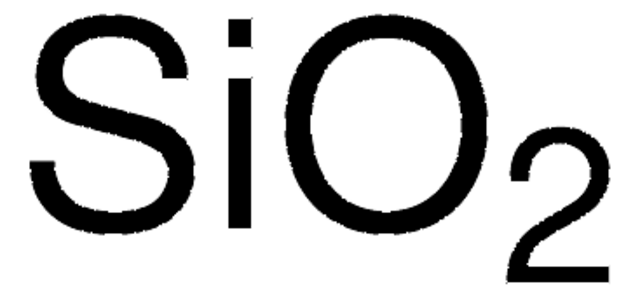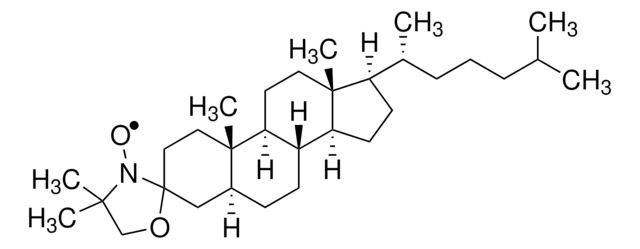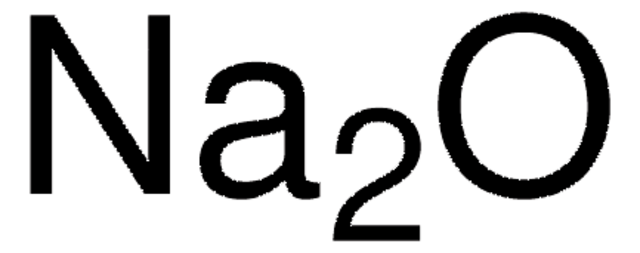262951
Silicon monoxide
powder, −325 mesh
Synonym(s):
Silicon monooxide
Sign Into View Organizational & Contract Pricing
All Photos(3)
About This Item
Linear Formula:
SiO
CAS Number:
Molecular Weight:
44.08
EC Number:
MDL number:
UNSPSC Code:
12352303
PubChem Substance ID:
NACRES:
NA.23
Recommended Products
form
powder
Quality Level
particle size
−325 mesh
density
2.13 g/mL at 25 °C (lit.)
application(s)
battery manufacturing
SMILES string
[O+]#[Si-]
InChI
1S/OSi/c1-2
InChI key
LIVNPJMFVYWSIS-UHFFFAOYSA-N
Looking for similar products? Visit Product Comparison Guide
Related Categories
General description
Silicon monoxide (SiO) is a unique compound with high optical transparency and electrical conductivity. Its ability to form thin films allows for effective use in optoelectronic devices, such as solar cells and photodetectors, where it enhances light absorption and charge transport. Additionally, SiO exhibits promising characteristics for use in battery technologies, particularly in lithium-ion batteries, where it can improve energy density and cycle stability.
Application
- Unraveling the Fundamental Mechanism of Interface Conductive Network Influence on the Fast-Charging Performance of SiO-Based Anode for Lithium-Ion Batteries.: This paper explores the role of interface conductive networks in enhancing the fast-charging capabilities of SiO-based anodes. The research highlights the critical mechanisms influencing the performance, offering pathways to develop high-efficiency lithium-ion batteries (Zhang et al., 2023).
- Distinctive Electric Properties of Group 14 Oxides: SiO2, SiO, and SnO2.: The study compares the electrical properties of various group 14 oxides, including silicon monoxide, to understand their potential applications in energy storage and other technologies. The findings provide a detailed analysis of SiO′s unique properties (Guerreiro et al., 2023).
Signal Word
Warning
Hazard Statements
Precautionary Statements
Hazard Classifications
Eye Irrit. 2 - Skin Irrit. 2 - STOT SE 3
Target Organs
Respiratory system
Storage Class Code
13 - Non Combustible Solids
WGK
WGK 3
Flash Point(F)
Not applicable
Flash Point(C)
Not applicable
Personal Protective Equipment
dust mask type N95 (US), Eyeshields, Gloves
Choose from one of the most recent versions:
Already Own This Product?
Find documentation for the products that you have recently purchased in the Document Library.
Simon Grabowsky et al.
Inorganic chemistry, 48(10), 4384-4393 (2009-04-22)
Variation of a bond angle can tune the reactivity of a chemical compound. To exemplify this concept, the nature of the siloxane linkage (Si-O-Si), the most abundant chemical bond in the earth's crust, was examined using theoretical calculations on the
Elisabeth Galopin et al.
Langmuir : the ACS journal of surfaces and colloids, 26(5), 3479-3484 (2009-11-07)
The article reports on the selective adhesion of Bacillus cereus spores on patterned and heterogeneously wetted superhydrophobic silicon nanowires surfaces. Superhydrophilic patterns on superhydrophobic silicon nanowire (SiNW) surfaces were prepared by a standard optical lithography technique. Exposure of the patterned
Nam-Joon Cho et al.
Nature protocols, 5(6), 1096-1106 (2010-06-12)
Supported lipid bilayers (SLBs) mimic biological membranes and are a versatile platform for a wide range of biophysical research fields including lipid-protein interactions, protein-protein interactions and membrane-based biosensors. The quartz crystal microbalance with dissipation monitoring (QCM-D) has had a pivotal
Etienne Garand et al.
Physical chemistry chemical physics : PCCP, 10(11), 1502-1506 (2008-03-11)
The first gas-phase infrared spectra of silicon monoxide cations (SiO)(n)(+), n = 3-5, using multiple photon dissociation in the 550-1250 cm(-1) frequency range, are reported. All clusters studied here fragment via loss of a neutral SiO unit. The experimental spectra
D Y Ju et al.
Journal of nanoscience and nanotechnology, 11(10), 8738-8743 (2012-03-10)
In this study, the composite magnetic nanoparticles of coated SiO nano film with about 8 nm size and high saturation magnetization value, were synthesized by liquid phase precipitation method. The magnetic nanoparticles can be dispersed in various liquid media, widely
Articles
Three approaches generate white light, including LED-based down-conversion for broader applications.
Our team of scientists has experience in all areas of research including Life Science, Material Science, Chemical Synthesis, Chromatography, Analytical and many others.
Contact Technical Service





